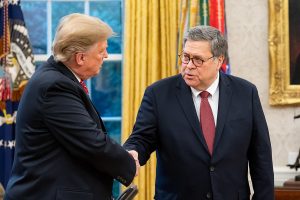by Danny Sjursen
I remember the day President Obama let me down.
It was December 1, 2009, and as soon as the young president took the podium at West Point and — calm and cool as ever — announced a new troop surge in Afghanistan, I knew. There wasn’t a doubt in my mind. In that instant, George W. Bush’s wars had become Barack Obama’s.
But where Bush had seemed, however foolishly, to believe his own rhetoric about America’s glorious military mission in the world, you always sensed that Obama’s heart just wasn’t in it. He’d been steamrolled by ambitious generals who pioneered generational warfare and hawkish cabinet members like Secretary of State Hillary Clinton and Bush-holdover Secretary of Defense Robert Gates. Then again, what choice did he have, given the way he’d run his presidential campaign on the idea that Afghanistan was a “war of necessity” and so the foil for Iraq, the “dumb war”? Now he was stuck with that landlocked, inhospitable little war, come what may. As we all know (and as I had little doubt then), it didn’t work out. Not at all.
Like many other idealistic Americans, I’d bet big on Obama. The madness and futility of my own 15 months in Iraq as a scout platoon leader — you know, one of those “warriors” you’re obligated to thank endlessly for his service — had forever soured me on nation-building crusades in faraway lands. And the young, inspiring senator from Illinois seemed to have some authentic anti-war chops. Unlike Hillary Clinton or Joe Biden, he was untarnished by the October 2002 Iraq War resolution vote that gave the Bush administration the right to shock and awe the hell out of Saddam Hussein. Looking back, I suppose I should have known better. Obama had only been a state senator with an essentially nonexistent record on foreign policy when he first criticized Operation Iraqi Freedom. Still, after so many years of Bush’s messianic adventures, anyone seemed preferable.
That was more than eight years ago and somehow the United States military is still slogging along in Iraq and Afghanistan. What’s more, Bush’s wars have only expanded in breadth, if not in depth, to Syria, Yemen, Libya, Somalia, and Niger, among other places. Yes, ISIS as a “caliphate” has been defeated. As a now-global franchise, however, anything but, and victory — whatever that might mean at this point — couldn’t be further off as our next president, Donald Trump, approaches his one year mark in office and he and “his” military only ratchet up those wars further.
Good Instincts?
The Trump-Clinton election fiasco of 2016 was, to say the least, disturbing. And while I was no fan of Mr. Trump’s language, demeanor, or (however vague) policies, when it came to our wars he did seem to demonstrate some redeeming qualities. Running against Hillary the hawk presented him with genuine opportunities. She, after all, had been wrong about every major foreign policy decision for more than a decade. Iraq? She voted for it. Afghanistan? She wanted another “surge.” Libya? She was all in and had a fine chuckle when autocrat Muammar Gaddafi was killed.
Mr. Trump, on the other hand, while visibly ill informed and anything but polished on such subjects, occasionally sounded strangely rational and ready to topple more than a few sacred cows of the foreign policy establishment. He called both the Iraq and Afghan wars “stupid,” criticized the poorly planned and executed Libyan operation that had indeed loosed chaos and weaponry from Gaddafi’s looted arsenals across North Africa, and had even questioned whether military escalation, supposedly to balance Russian moves in Eastern Europe, was necessary. Whether he really believed any of that stuff or was just being an effective attack dog by pouncing on Hillary’s grim record we may never know.
What already seems clear, however, is that Trump’s version of global strategy — to the extent that he even has one — is turning out to be yet more of more of the same. He did, of course, quickly surround himself with three generals from America’s losing wars clearly convinced that they could “surge” their way out of anything. More troublesome yet, it seems to have registered on him that military escalation, air strikes of various sorts, special operations raids, and general bellicosity all look “presidential” and so play well with the American people.
In constant need of positive reinforcement, Trump has seemed to revel in the role of war president. When he simply led a round of applause for a widow whose husband had died in a botched raid in Yemen early in his presidency, CNN commentator Van Jones typically gushed that he “just became president of the United States, period.” After he ordered the launching of a few dozen cruise missiles targeting one of Bashar al-Assad’s air bases in Syria, even Washington Post columnist and CNN host Fareed Zakaria lauded him for acting “presidential.” War sells, as does fear, especially in the America of 2017, a country filled with outsized fears of Islamic terrorism that no one knows how to stoke better than Donald Trump. So expect more, much more, of each next year.
A Brief Tour of Trump’s Wars
Where exactly does that leave us? Like Obama before him, and Bush before him, President Trump has opted for continuing, even escalating, America’s war for the Greater Middle East. Long gone are the critiques of “stupid” interventions. As he announced a new mini-surge in Afghanistan, he did admit that his instinct had been to end America’s longest war, but it wasn’t an instinct that stood tall in the face of his war-fighting generals.
Now, after nearly a year in office, those instincts of his seem limited to whatever his generals tell him. An ever-so-brief tour of his wars suggests — to give you a little preview of what’s to come (should Americans even care) — two things: first, that on the horizon is more of more of the same; second, that the result is likely to be, as it has largely been in these last years, some version of stalemate verging on defeat.
* Afghanistan is a true mess. Now entering its 17th year, the war in that infamous graveyard of empires has left the U.S. military short on answers.
Afghan Security Forces (ASF), the foundation of American “strategy” there, are being killed and wounded at an unsustainable rate. And all that sacrifice — to the tune of perhaps 20,000 ASF casualties annually — has delivered precious little in the way of stability. More Afghan provinces and districts are contested or under direct Taliban control today than at any time in these years of American intervention. Corruption is still endemic in the government and the military and few rural Afghans seem to consider the regime in Kabul legitimate.
It’s all been so futile that it borders on the absurd. Without an indefinite influx of Western money, training, and logistical support, the Afghan government simply cannot hold out. Despite the efforts of hundreds of thousands of American troops and countless bureaucrats, Washington has never been able to deal with or alter the essential quandary that lies at the heart of the Afghan mission: the Taliban still counts on sanctuary in the tribal borderlands of Pakistan and so long as that’s available — and it seems it will be in perpetuity — there is no way to militarily defeat them. Besides, the Taliban harbor no discernible transnational aspirations and most al-Qaeda operatives have long since left Afghanistan’s mountains for other locales throughout the Greater Middle East.
Mr. Trump’s generals and their troops on the ground have no answers to these confounding challenges. One thing is guaranteed: 3,000, or even 50,000 more troops won’t break the stalemate, nor will loosing some of the last Vietnam-era B-52s to bomb the countryside. When I last surged into Afghanistan myself in 2011-2012, I was joined by more than 100,000 fellow Americans. It didn’t matter. We achieved about as much as this current “strategy” will: stasis.
* Iraq is rarely in the headlines anymore, except maybe as an offshoot of America’s anti-ISIS campaign in Syria. Nonetheless, with more than 5,200 U.S. troops on the ground (and don’t forget the private contractors also in-country), you’ve not heard the last of Washington’s 14-year-old campaign there. What exactly is the U.S. charter in Iraq these days anyway? To defeat ISIS? That’s (mostly) done, in a conventional sense anyway. The so-called caliphate has fallen, though ISIS as a global brand is thriving. To stabilize the country in order to avoid ISIS 2.0 or block the growth and spread of well-armed Shia militias? Don’t count on a few thousand troops succeeding where 150,000 servicemen failed at similar tasks the last time around.
Iraq remains divided and ultimately unstable. In the north, the Kurds want autonomy, which the Shia-dominated Baghdad regime will have none of. In the north and west, Sunnis, living in the rubble of their unreconstructed cities, remain distrustful of Baghdad. (A year after its “liberation” from ISIS, for instance, significant parts of Fallujah still lack water or electricity.) Unless they are somehow integrated more equitably into the Shia-controlled political heartland, they will predictably support the next iteration of Islamist extremists.
The only real winner in the Iraq War was Iran. A mostly friendly, Shia-heavy government in Baghdad suits Tehran just fine. In fact, by toppling Saddam Hussein, the United States all but ensured that Iran would gain increased regional influence. The bottom line is that Iraq has many challenges ahead and Washington doesn’t have a hope in hell of meaningfully solving any of them.
How will Baghdad divide power between its various sects and factions? How will it demobilize and/or integrate those Shia militia units that checked ISIS’s expansion in 2014-2015 into its military or will it? How much autonomy will President Haider al-Abadi allow the Kurds?
The all but perpetual American military presence in that country seems unlikely to help with any of Iraq’s countless problems. And given that, like just about anyone else on this planet, Arabs don’t take kindly to even the most minimalist of occupations, whatever they may officially be called, expect those U.S. troops to end up in someone’s line of fire sooner or later. (Recent history suggests that sooner is more likely.)
* When it comes to Syria, can anyone articulate a coherent strategy in the devastated ruins of that country amid a byzantine network of factions, terror groups, and the once again ascendant government and military of Bashar al-Assad? It seems like another formula for certain disaster. Somehow, Syria makes even the situation in Iraq seem simple. Perhaps 2,000 U.S. troops are on the ground in north and southeast Syria. Getting in was the easy part, getting out may be all but impossible.
U.S.-sponsored, mainly Kurdish forces, backed by American air power and artillery, seized ISIS’s self-proclaimed capital, Raqqa, and helped turn the militants of the Islamic State back into a guerilla force. Now what? Turkish President Recep Tayyip Erdogan, Syrian President Assad, Russian President Vladimir Putin, and the Iranians all loathe the Kurds and are none-too-keen to allow them any form of long-term autonomy. A tenuous stalemate has developed between Assad’s army and his foreign backers on one side and the small U.S. force with its allied Kurdish fighters on the other. Sooner or later, however, it’s a recipe for disaster as the possibilities of “accidental” conflict abound. The Trump team, like Obama’s before them, appears to have no consistent vision for Syria’s future. Can Assad stay in power? Does the U.S. even have a say in that question any longer? Assad, Putin, and Hezbollah appear to hold a far stronger hand in that country’s six-year civil war.
In addition to yet more destruction, division, and chaos, it’s unclear what the U.S. stands to achieve in Syria. Nevertheless, Secretary of Defense James Mattis and the Pentagon recently announced that, just as in Iraq, U.S. troops would stay in Syria after the final defeat of ISIS. On the subject, a Pentagon spokesperson was quite emphatic: “We are going to maintain our commitment on the ground as long as we need to, to support our partners and prevent the return of terrorist groups.” In other words, the U.S. military will remain there until when exactly? Long enough for the civil war to end and liberal democracy to burst forth in the Syrian countryside?
That country is hardly a vital national security interest of the United States and the Trump team’s plans seem as vague as they are foolish. Nonetheless, on the intervention goes and where it ends nobody knows. It’s not, however, likely to end well.
* Yemen, Niger, Somalia, Libya, and various other smaller conflicts round out the exhausting list of what are now Trump’s wars. U.S. troops still occasionally die in those places, which few Americans could find on a map. Even hawkish wonks like Senator Lindsey Graham seem unclear about how many troops the U.S. has in Africa. Fear not, however, Senator Graham assures us that Americans should expect “more, not less” intervention on that continent in the years to come and, given what we’re learning about the Pentagon’s latest plans for places like Somalia suggests that he couldn’t be more accurate and that the American version of what retired general and ex-CIA Director David Petraeus has termed (in relation to Afghanistan) “generational” warfare is now spreading from the Greater Middle East to Africa.
Washington’s efforts in Yemen and North Africa have been and continue to be nothing if not counterproductive. In Yemen, the United States is complicit in the Saudi blockading and terror bombing of the poorest Arab state and a resultant famine and cholera outbreak that could affect millions, especially children. This campaign isn’t winning America any friends on the “Arab street” and only seems to have empowered al-Qaeda in the Arabian Peninsula.
In Africa, from Nigeria to Somalia, infusions of U.S. troops have not measurably improved regional stability. Quite the opposite, despite the protestations of U.S. Africa Command. In fact, there are now more radical Islamist groups than ever before and terrorist attacks have all but exploded on that continent.
All these wars, once Obama’s, are now Trump’s. The only differences, it seems, are of form rather than substance. Unlike Obama, Trump delegates troop-level decisions to his secretary of defense and the generals. Furthermore, when it comes to what the public can know, there appears to be even less transparency about the exact number of soldiers being deployed across the Middle East and North Africa than had previously been the case. And that seems to suit most Americans just fine. A warrior caste of professionals fights the country’s various undeclared wars, taxes remain low, and little is asked of the populace.
Call me a pessimist but I have no doubt that the United States is in for at least three more years of perpetual war — and it probably won’t end there either. There’s no silver bullet for such conflicts, so the military won’t be able to end them in any reasonably easy way or it would have done so years ago. And that’s assuming that far worse in the way of war isn’t in store for us in the Koreas or Iran.
Trump will not be impeached. He may even win a second term. Crazier things have happened, like, well, his election in 2016. And even if he were gone, America’s wars like the Pentagon’s budget have proven remarkably bipartisan affairs. As the Obama years make clear, don’t count on a Democratic president to end them.
Children born after 9/11 will vote in 2020. In that sense, at least, General Petraeus is right. These wars truly are generational.
Republished, with permission, from TomDispatch.
Major Danny Sjursen, a TomDispatch regular, is a U.S. Army strategist and former history instructor at West Point. He served tours with reconnaissance units in Iraq and Afghanistan. He has written a memoir and critical analysis of the Iraq War, Ghost Riders of Baghdad: Soldiers, Civilians, and the Myth of the Surge. He lives with his wife and four sons in Lawrence, Kansas. Follow him on Twitter at @SkepticalVet.
[Note: The views expressed in this article are those of the author, expressed in an unofficial capacity, and do not reflect the official policy or position of the Department of the Army, Department of Defense, or the U.S. government.]
Follow TomDispatch on Twitter and join us on Facebook. Check out the newest Dispatch Book, Alfred McCoy’s In the Shadows of the American Century: The Rise and Decline of U.S. Global Power, as well as John Dower’s The Violent American Century: War and Terror Since World War II, John Feffer’s dystopian novel Splinterlands, Nick Turse’s Next Time They’ll Come to Count the Dead, and Tom Engelhardt’s Shadow Government: Surveillance, Secret Wars, and a Global Security State in a Single-Superpower World.
Copyright 2017 Danny Sjursen






Good job, Danny Sjursen. Looking for anything positive about it all, could it be that the U.S. military command’s engagements in Afghanistan, Iraq, Syria, Yemen, Somalia, Niger, and the rest of the 130 countries where Special Operations forces are imbedded, will tie their hands so they will beg off going into a big one (or two) in Korea and Iran? Let’s hope so!
Great piece. Sadly, the hugely expensive power apparatus created by the US in Afghanistan is simply unsustainable – – a fact obvious for many years now.
For national strategy, Trump has put himself at the mercy of general officers who don’t have the brains that god gave geese, as the saying goes.
President Harry Truman: “It’s the fellows who go to West Point and are trained to think they’re gods in uniform that I plan to take apart”. . .”I didn’t fire him [General MacArthur] because he was a dumb son of a bitch, although he was, but that’s not against the law for generals. If it was, half to three quarters of them would be in jail.”
“It’s all been so futile that it borders on the absurd.” Yes. General Dunford reported in 2014 that there were only 50-75 al-Qaeda in Afghanistan. The real fight there in that tribal country has been and is now between the northern Tajiks and the southern Pashtuns, with the US favoring the north and Pakistan the south. So for the US, the Taliban (Pakistan’s agents) are the enemy not al-Qaeda.
Regarding Obama and Afghanistan, prior to his Dec 2009 West Point speech regarding his troop expansion of 70,000 (not the 30,000 frequently cited) and a continued alliance with Pakistan (which is really not an ally) were a promise for a diplomatic effort (Mar 2009) which was never done and a dire report from General McChrystal (Aug 2009) which was disregarded.
>”I want the American people to understand that we have a clear and focused goal: to disrupt, dismantle and defeat al Qaeda in Pakistan and Afghanistan, and to prevent their return to either country in the future. . . .together with the United Nations, we will forge a new Contact Group for Afghanistan and Pakistan that brings together all who should have a stake in the security of the region — our NATO allies and other partners, but also the Central Asian states, the Gulf nations and Iran; Russia, India and China.”
>General McChrystal’s Assessment Report on Aug 30, 2009 included: ‘Afghanistan’s insurgency is clearly supported from Pakistan. . .and are reportedly aided by some elements of Pakistan’s ISI [Directorate for Inter-Services Intelligence ].” . . .”Indian political and economic influence is increasing in Afghanistan, including significant efforts and financial investment. In addition, the current Afghan government is perceived by Islamabad to be pro-Indian. While Indian activities largely benefit the Afghan people, increasing Indian influence in Afghanistan is likely to exacerbate regional tensions and encourage Pakistani countermeasures in Afghanistan or India.”
I know the feeling. Seeing American power over seas while a young man can be disconcerting. I experienced it in Asia and it has never left me. It took a while for my teen age brain to catch on, but this was clearly a foreigner invading someone that didn’t want them there. Asian inscrutability is just a polite way to show contempt. Those people hated us and didn’t want us there. Communism wasn’t their biggest fear. It was foreigners, mostly white in the last 400 years, that they hated and feared.
We just threw money at people that we thought agreed with us and they ran off with it and left us with their problems. The Middle East does not appear to be any different. White foreigners with bigger guns invading. You would think we would learn but we haven’t because of domestic censorship. Americans don’t grow up with the truth of their own country’s history. We aren’t good guys when we go to other countries and tell them how to live.